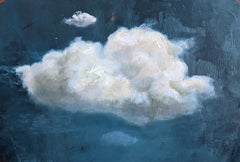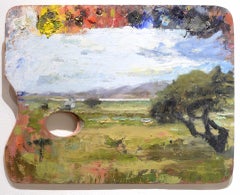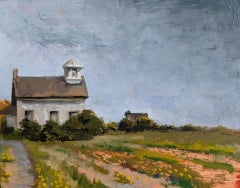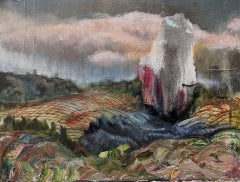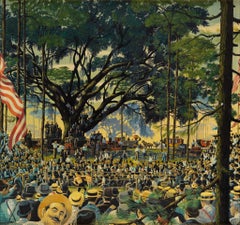Caitlin Hurd Art
to
4
13
6
5
2
10
1
2
Overall Height
to
Overall Width
to
1
1
1
1
13
13
6,857
3,172
2,516
1,217
13
13
4
4
3
Artist: Caitlin Hurd
Cloud
By Caitlin Hurd
Located in Denver, CO
Cloud, 2020
Category
21st Century and Contemporary Caitlin Hurd Art
Materials
Oil, Paper
Bear I Am Afraid Of
By Caitlin Hurd
Located in Denver, CO
Bear I Am Afraid Of
Category
21st Century and Contemporary Caitlin Hurd Art
Materials
Oil, Canvas
Camp
By Caitlin Hurd
Located in Denver, CO
Camp
Category
21st Century and Contemporary Caitlin Hurd Art
Materials
Mylar, Oil
The Great Sand Dunes National Park
By Caitlin Hurd
Located in Denver, CO
The Great Sand Dunes National Park
Category
21st Century and Contemporary Caitlin Hurd Art
Materials
Wood, Oil
Church as Vacation Home
By Caitlin Hurd
Located in Denver, CO
Church as Vacation Home, 2020
Category
21st Century and Contemporary Caitlin Hurd Art
Materials
Oil, Panel
View From the Shed
By Caitlin Hurd
Located in Denver, CO
View From the Shed
Category
21st Century and Contemporary Caitlin Hurd Art
Materials
Canvas, Oil
Day at the Lake
By Caitlin Hurd
Located in Denver, CO
Day at the Lake
Category
21st Century and Contemporary Caitlin Hurd Art
Materials
Board, Oil
Landscape II
By Caitlin Hurd
Located in Denver, CO
Landscape II
Category
21st Century and Contemporary Caitlin Hurd Art
Materials
Oil, Board
Rainbow Valley
By Caitlin Hurd
Located in Denver, CO
Rainbow Valley
Category
21st Century and Contemporary Caitlin Hurd Art
Materials
Canvas, Oil
Up Hill
By Caitlin Hurd
Located in Denver, CO
Up Hill
Category
21st Century and Contemporary Caitlin Hurd Art
Materials
Mylar, Oil
Landscape I
By Caitlin Hurd
Located in Denver, CO
Landscape I
Category
21st Century and Contemporary Caitlin Hurd Art
Materials
Oil, Board
View from the Nest
By Caitlin Hurd
Located in Denver, CO
View from the Nest
Category
21st Century and Contemporary Caitlin Hurd Art
Materials
Canvas, Oil
"Rainbow Hole" Oil Painting
By Caitlin Hurd
Located in Denver, CO
Caitlin Hurd's (US based) "Rainbow Hole" is an original, handmade oil painting that depicts a wide open grass plain where mountains sway majestically in the background and a rainbow shoots straight into the blue sky from a hole in the ground.
About the Artist:
Born 1978, in Massachusetts, Caitlin Hurd grew up in Salem and the suburbs north of Boston. In 2000, she received a BFA in furniture design from The Minneapolis College of Art and Design. She went on to lead school-age children in the creation of public murals for their communities. In 2006, she graduated with an MFA in painting from The New York Academy of Art. In 2017 Hurd founded the Artists Off Grid Residency program. She is also the founder of Spark Portraits, where she paints commissioned oil portraits from photographs...
Category
2010s Surrealist Caitlin Hurd Art
Materials
Wood, Oil
Related Items
"The Sullivan-Kilrain Fight" Story Illustration
Located in Fort Washington, PA
An undated story illustration depicting the 1889 bare-knuckle heavyweight title fight in Richburg, Mississippi, which Sullivan won, having lasted 75 rounds.
Category
20th Century Caitlin Hurd Art
Materials
Masonite, Oil
Night Unto Thee
Located in Charelston, SC
Noland Anderson is a self taught portrait artist who strives to create works of art that are a celebration of people of color. Represented by Neema Fine Art Gallery, he is known for his detailed compositions in oils applied with loose brush strokes. He often features images of Black women and men engaging in everyday life in urban settings. Born in Newport News, Virginia with roots in Sumpter, SC, Noland's passion for figure drawing was formed at an early age. Noland attended the Art Institute of Fort Lauderdale where he received an Associate Degree in Advertising. Upon graduating, he went on to work as a freelance illustrator, designing Judaic art...
Category
21st Century and Contemporary Caitlin Hurd Art
Materials
Gold Leaf
Careful Sparrow
Located in Charelston, SC
Noland Anderson is a self taught portrait artist who strives to create works of art that are a celebration of people of color. Represented by Neema Fine Art Gallery, he is known for his detailed compositions in oils applied with loose brush strokes. He often features images of Black women and men engaging in everyday life in urban settings. Born in Newport News, Virginia with roots in Sumpter, SC, Noland's passion for figure drawing was formed at an early age. Noland attended the Art Institute of Fort Lauderdale where he received an Associate Degree in Advertising. Upon graduating, he went on to work as a freelance illustrator, designing Judaic art...
Category
21st Century and Contemporary Caitlin Hurd Art
Materials
Gold Leaf
Kobe Bryant Super BasketBall (One of a kind memorabilia W/ Turning Table)
By Mauro Oliveira
Located in LOS ANGELES, CA
**ANNUAL SUPER SALE TIL APRIL 25th ONLY**
*This Price Won't Be Repeated Again This Year - Take Advantage Of It*
'Kobe Bryant Super Basketball' is THE one of a kind ...
Category
21st Century and Contemporary Pop Art Caitlin Hurd Art
Materials
Resin, Plexiglass, Rubber, Glitter, Acrylic
1970s Abstract Oil Painting by San Francisco Artist P. Ciment
By Phyllis Ciment
Located in San Francisco, CA
1970s Abstract Oil Painting by San Francisco Artist Phyllis Ciment
Created with oils on paper over mat board.
Using wide brush strokes an...
Category
Mid-20th Century Abstract Caitlin Hurd Art
Materials
Oil, Archival Paper
H 40 in W 32 in D 0.1 in
Australian American D. Rankin Abstract Expressionist Oil Painting Rocky Hillside
By David Rankin
Located in Surfside, FL
David Rankin, American (b. 1946)
Rocky Hillside, (1990)
Oil on paper
Hand signed lower right, signed and titled verso.
30 x 22 1/2 inches
David Rankin is a New York-based, British-born Australian post-war and contemporary artist known for his expressionistic abstract paintings. His work can be categorized by his use of quick, loose brushstrokes, reminiscent of scribbles on a page. Rankin works predominantly in oil painting and acrylic on canvas, but also works with paper, prints, sculptures and ceramics. Rankin has held over 100 one-person exhibitions in cities across the world, including New York, London, Paris, Beijing, Mexico, Vienna, Berlin and Cologne, as well as all over Australia. Represented in many of the world’s leading public and private collections and museums, David Rankin’s work is featured in Australia’s leading institutions, including the National Gallery of Australia, Art Gallery of New South Wales, National Gallery of Victoria and Queensland Art Gallery.
David Rankin was born in Plymouth, Devon, England in 1946 then emigrated to Australia with his family in 1948. He spent his childhood in the 1950s in the semi-rural Port Hacking region South of Sydney and his teenage years in country New South Wales, from Hay, Wagga Wagga and Albury in the South to Bourke and Brewarrina in the North.
Rankin is self-taught, developing his techniques and ideas in the outback towns of his youth. He was inspired by the greats from Leonardo da Vinci to Paul Klee as well as being influenced by the history of Buddhism and Asian art. In his travels before he arrived in Sydney in 1967 he developed a concept of what he wanted to achieve as an Australian artist. His dream was to express the anima, the life spirit or the essence of God in all nature. As an Australian artist he believed could bring the elements of Western Art together with an understanding and love for the cultures of Asia and the Australian Aborigine. He also felt that as Australia was closer to Asia than Europe it made sense to think about the art of Indian, Chinese and Japanese artists, and that one could not be an authentic articulate Australian artist without a love and respect for the artistic and spiritual expressions of the various Aboriginal artists, peoples and cultures. His work combined elements of Abstract Expressionist painting with Jewish and Aboriginal influences.
In 1979 his first wife, Jennifer Mary Roberts (née Haynes) died. Rankin subsequently met his current wife Lily Brett, whose own life was etched by tragedy with her parents being survivors of the Holocaust. She too migrated to Australia as a child after the Second World War in 1948. The artist recounts that his empathy for Lily and the pity for his first wife's death fused into what he calls "the dark blessing of my life." The darkness was transformed into images. The author Dore Ashton writes that the events of 1979 and the fire which ravished his studio in 1997 and burnt his art works and many personal possessions, had a profound impact on his work.
Having personal life experiences as his subject matter, Rankin's paintings contemplate these things. For example, his Jerusalem series followed a trip to Jerusalem in 1988, which then led to his Golgotha works. His travels to the Australian, American and Mexican deserts became the subject matter for many of his canvases, such as Ridge – Mungo, Golden Prophecy – San Antonio, Grey Sonora Landscape and then led to his Witness Series. From the fire in his studio he then painted Buddha and Flames. He illustrated two books by Lily Brett on the holocaust and explored the theme further in his huge work The Drowned and The Saved from a book by Primo Levi of the same name. Through Brett he encountered Jewish mythology and painted judaica imagery, Black...
Category
1990s Abstract Expressionist Caitlin Hurd Art
Materials
Paper, Oil
Intenciones del Silencio VI, IV and II. Triptych
Located in Miami Beach, FL
Intenciones del Silencio VI, IV and II. Triptych, 2019 by Angélica Chavarro Franco
From the series Intenciones del Silencio
Mixed media (Oil paint and textile) on canvas
Overall fra...
Category
2010s Abstract Caitlin Hurd Art
Materials
Textile, Canvas, Paper, Mixed Media, Oil
H 33.7 in W 35.8 in D 1.3 in
Portrait Gentleman Black Slashed Doublet & Orange Sash Dutch Oil on Panel c.1650
By Bartholomeus van der Helst
Located in London, GB
This exquisite portrait of a gentleman depicted in a sumptuous black doublet edged with silver and slashed sleeves is an excellent example of the type of portrait fashionable in England and the Low Countries during the 17th century. The confident pose, striking orange sash - the colour of the house of Orange Nassau - and the leather gorget imbue the sitter with a sense of masculinity and power. The profusely decorated costume is of the highest quality and de rigueur of an elite class - the artist has carefully cultivated this portrait to emphasise the sitter’s wealth and standing in the society that he belonged to. The casual pose, with one arm resting on a hip, is much less formal than earlier decades, and it speaks of ‘sprezzatura’ – one’s appearance should not appear laborious, but instead, effortless.
The oil on cradled panel portrait can be dated to circa 1650 based on the hairstyle and the attire - small falling collar, short doublet (doublets reduced in size to just below the ribcage in the late 1650’s), and the type of slashed sleeves with the sleeve seams left open to reveal the white fabric.
The demand for portraits in the Netherlands was great in the 17th century. Bartholemeus van der Helst was considered to be one of the leading portrait painters of the Dutch Golden Age surpassing even Rembrandt as the most sought-after portraitist in Harlaam. The Dutch Golden Age, roughly spanning the 17th century, was a period when Dutch trade, science, military, and art were among the most acclaimed in the world. Dutch explorers charted new territory and settled abroad. Trade by the Dutch East-India Company thrived, and war heroes from the naval battles were decorated and became national heroes. During this time, The Dutch Old Masters began to prevail in the art world, creating a depth of realistic portraits of people and life in the area that has hardly been surpassed. The Golden Age painters depicted the scenes that their discerning new middle-class patrons wanted to see. This new wealth from merchant activities and exploration combined with a lack of church patronage, shifted art subjects away from biblical genres. Still life’s of items of everyday objects, landscapes, and seascapes reflecting the naval and trade power that the Republic enjoyed were popular. The new wealthy class were keen to have their portraits commissioned and many artists worked in this lucrative field. Such was the popularity of art that everyone had a painting, even the humble butcher, and hundreds of thousands of paintings were produced.
By tradition the sitter is Maarten Tromp (1598-1653) who was an Admiral in the Dutch Navy (the reverse of the portrait contains an old handwritten inscription “van Tromp”). Certainly, the distinctive orange sash is similar to those worn by officers of the Dutch army in the Netherlands who served under the Princes of Orange and the House of Nassau. However, it should be noted that the physiognomy differs from other images of Tromp.
Tromp was the oldest son of Harpert Maertensz, a naval officer and captain. He joined the Dutch navy as a lieutenant in July 1622 and was later promoted from captain to Lieutenant-Admiral of Holland and West Frisia in 1637. In 1639, during the Dutch struggle for independence from Spain, Tromp defeated a large Spanish fleet bound for Flanders at the Battle of the Downs, which marked an enormous change - the end of Spanish naval power. He was killed in action during the First Anglo-Dutch War in 1653 where he commanded the Dutch fleet in the battle of Scheveningen.
Gloves were an absolutely vital accessory and the elaborate pair in this portrait are embellished with threads of silk and precious metals and salmon-coloured lining. He wears only one glove and holds the other, providing an opportunity to better display the cuffs and detail on his right wrist and forearm. The gloves are probably made from the most prized leather which came from Spain, in particular from Cordova. Cordovan leather was tanned with a special vegetal process that left it both highly impermeable and divinely soft. King Charles I, posed in a rather relaxed manner for Daniel Mytens’s portrait in 1631, is wearing gloves and boots in matching Cordovan leather. The hide is thick, but you can see just how supple it is from the way the gauntlet dimples and the long boot legs fold over themselves, rippling and wrinkling at the ankles.
Apart from keeping hands warm the use of gloves during the 15th through the 19th centuries were full of symbolism and they were worn regardless of the season. They kept the skin unblemished - soft, smooth hands were considered highly attractive. This combination of necessity and proximity to bare skin made gloves a deeply personal gift and they took on a strong symbolic significance and were regarded as emblematic of fidelity and loyalty for hundreds of years. Such was the importance of their symbolism was that some gloves were never intended to be worn at all. Their luxury made them ideal gifts at court, and so in the 15th and 16th centuries, ambassadors often presented them as symbols of loyalty.
Until the mid-19th century, it was customary to give gloves as tokens to guests at weddings and to mourners at funerals. Gentleman often gifted their bride-to-be with a pair of gloves (the obligatory gift) and were handed over at the betrothal and put on display before the wedding took place. It was probably their direct contact with the skin that led to the eroticism of gloves. Not only were pairs often exchanged between lovers, but from the 16th to the 18th centuries, it was common practice to remove one glove and give it as a gift to a favourite. The idea of the item being presented still warm from the wearer’s hand is certainly suggestive. Following the death of King George IV, his executors purportedly found over a thousand mismatched ladies’ gloves among his possessions.
The sentiment of a 17th-century poem reveals the popularity of the practice: “Come to our wedding to requite your loves / Shew us your hands and we’ll fit you with gloves.” Such generosity might be pricey for the hosts, but gloves of varying quality could be offered depending on the status of the recipient. Pairs made with the finest Spanish leather might be reserved for immediate family, while coarse sheep’s leather could be distributed among the servants and tradesmen. The apportioning of quality according to class provided a very clear message of the gloves’ intended use. For refined guests, they were decoration; for the lower classes, they were functional.
Bartholomeus van der Helst...
Category
17th Century Old Masters Caitlin Hurd Art
Materials
Wood Panel, Oil
H 38.59 in W 31.89 in D 2.76 in
"End Stop" Contemporary Abstract Gray and Green Concentric Circle Painting
Located in Houston, TX
Gray and green abstract contemporary concentric circle painting by Houston, TX artist David Hardaker. Signed, titled, and dated by the artist on the reverse.
Artist Statement: The w...
Category
2010s Contemporary Caitlin Hurd Art
Materials
Oil, Panel
H 45 in W 26.5 in D 1.75 in
Joseph Barber "Wheatfield" Original Oil Painting c.1960
By Joseph Barber
Located in San Francisco, CA
Large scale mid-century modern painting by listed American artist Joseph Barber (1915-1998)
The painting shows the beautiful stark landscape of an open wheat field under gray skies....
Category
Mid-20th Century Abstract Impressionist Caitlin Hurd Art
Materials
Masonite, Oil
H 28 in W 52 in D 3 in
"CD-ROM", Internet Icon, Textiles, Crochet Acrylic on Plexiglass
Located in Philadelphia, PA
This piece titled "CD-ROM" is a one-of-a-kind original piece by Nicole Nikolich (Lace in the Moon) and is made from crochet acrylic on plexiglass. Thi...
Category
21st Century and Contemporary Contemporary Caitlin Hurd Art
Materials
Yarn, Plexiglass, Acrylic
Take #44
By Wencke Uhl
Located in Bonn, NW
The hair is made of actual gold leaf (imitation), so the hair shines and sparkles nicely in light.
Original painting. Acrylic, oil, paper and gold leaf on high quality linen canvas s...
Category
2010s Art Deco Caitlin Hurd Art
Materials
Gold Leaf
Caitlin Hurd art for sale on 1stDibs.
Find a wide variety of authentic Caitlin Hurd art available for sale on 1stDibs. If you’re browsing the collection of art to introduce a pop of color in a neutral corner of your living room or bedroom, you can find work that includes elements of blue and other colors. You can also browse by medium to find art by Caitlin Hurd in oil paint, paint, canvas and more. Much of the original work by this artist or collective was created during the 21st century and contemporary and is mostly associated with the Surrealist style. Not every interior allows for large Caitlin Hurd art, so small editions measuring 9 inches across are available. Customers who are interested in this artist might also find the work of Peter Ellenshaw, Patrick Soper, and Piotr Butkiewicz. Caitlin Hurd art prices can differ depending upon medium, time period and other attributes. On 1stDibs, the price for these items starts at $640 and tops out at $7,100, while the average work can sell for $1,200.
